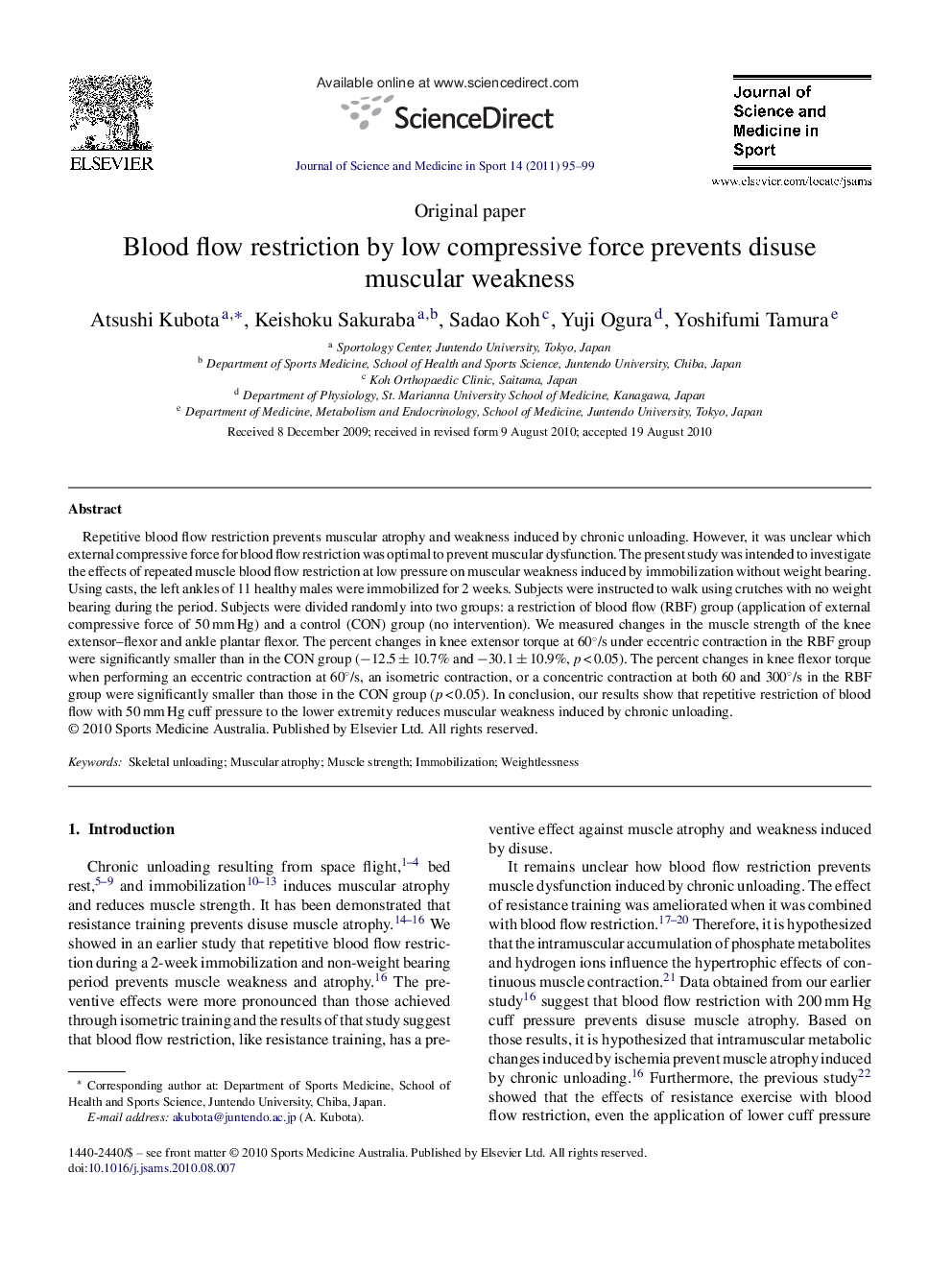| Article ID | Journal | Published Year | Pages | File Type |
|---|---|---|---|---|
| 2703162 | Journal of Science and Medicine in Sport | 2011 | 5 Pages |
Repetitive blood flow restriction prevents muscular atrophy and weakness induced by chronic unloading. However, it was unclear which external compressive force for blood flow restriction was optimal to prevent muscular dysfunction. The present study was intended to investigate the effects of repeated muscle blood flow restriction at low pressure on muscular weakness induced by immobilization without weight bearing. Using casts, the left ankles of 11 healthy males were immobilized for 2 weeks. Subjects were instructed to walk using crutches with no weight bearing during the period. Subjects were divided randomly into two groups: a restriction of blood flow (RBF) group (application of external compressive force of 50 mm Hg) and a control (CON) group (no intervention). We measured changes in the muscle strength of the knee extensor–flexor and ankle plantar flexor. The percent changes in knee extensor torque at 60°/s under eccentric contraction in the RBF group were significantly smaller than in the CON group (−12.5 ± 10.7% and −30.1 ± 10.9%, p < 0.05). The percent changes in knee flexor torque when performing an eccentric contraction at 60°/s, an isometric contraction, or a concentric contraction at both 60 and 300°/s in the RBF group were significantly smaller than those in the CON group (p < 0.05). In conclusion, our results show that repetitive restriction of blood flow with 50 mm Hg cuff pressure to the lower extremity reduces muscular weakness induced by chronic unloading.
